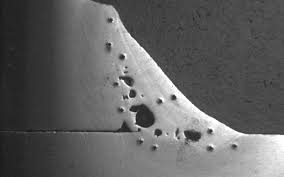Recognizing Porosity in Welding: Checking Out Causes, Effects, and Avoidance Strategies
As professionals in the welding market are well aware, recognizing the reasons, effects, and avoidance methods related to porosity is crucial for attaining robust and reputable welds. By delving right into the root creates of porosity, examining its harmful impacts on weld top quality, and exploring reliable prevention strategies, welders can enhance their understanding and abilities to generate high-quality welds regularly.
Common Root Causes Of Porosity
Contamination, in the type of dust, grease, or corrosion on the welding surface area, creates gas pockets when heated up, leading to porosity in the weld. Improper shielding occurs when the securing gas, generally utilized in procedures like MIG and TIG welding, is unable to completely safeguard the molten weld swimming pool from reacting with the bordering air, resulting in gas entrapment and succeeding porosity. Additionally, inadequate gas insurance coverage, often due to inaccurate circulation rates or nozzle positioning, can leave components of the weld unsafe, allowing porosity to develop.
Impacts on Weld Top Quality
The existence of porosity in a weld can significantly compromise the overall high quality and stability of the bonded joint. Porosity within a weld develops voids or cavities that compromise the structure, making it much more at risk to breaking, corrosion, and mechanical failing.
In addition, porosity can hinder the effectiveness of non-destructive screening (NDT) methods, making it challenging to spot various other problems or stoppages within the weld. This can lead to substantial safety and security worries, specifically in critical applications where the structural honesty of the welded parts is paramount.

Avoidance Techniques Summary
Provided the destructive influence of porosity on weld top quality, efficient avoidance techniques are crucial to keeping the architectural stability of bonded joints. Among the primary prevention strategies is extensive cleansing of the base products before welding. Impurities such as oil, oil, rust, and dampness can add to porosity, so making sure a tidy job surface is essential. Appropriate storage of welding consumables in completely dry conditions is also important to protect against wetness absorption, which can bring about gas entrapment during welding. Additionally, selecting the suitable welding criteria, such as voltage, current, and take a trip rate, can help reduce the threat of porosity development. Making sure ample protecting gas circulation and insurance coverage is an additional critical avoidance method, as not enough gas coverage can lead to climatic contamination and porosity. Correct welder training and certification are vital for applying preventive actions effectively and regularly. By incorporating these avoidance methods into welding practices, the event of porosity can be significantly reduced, resulting in stronger and more trusted welded joints.
Importance of Appropriate Shielding
Appropriate protecting in welding plays an essential function in protecting against atmospheric contamination and making certain the integrity of welded joints. Protecting gases, such as argon, helium, or a combination of both, are generally made use of to secure the weld swimming pool from reacting with components in the air like oxygen and nitrogen. When these responsive elements enter into contact with the warm weld swimming pool, they can trigger porosity, bring about weak welds with lowered mechanical properties.

Inadequate securing can lead to numerous issues like porosity, spatter, and oxidation, endangering the architectural integrity of the welded joint. Adhering to appropriate protecting methods is important to generate top quality welds with very little issues and make sure the durability and dependability of the bonded parts.
Monitoring and Control Techniques
How can welders properly keep an eye on and control the welding procedure to make certain optimum results and prevent defects like porosity? By continually checking these variables, welders can recognize inconsistencies from the perfect problems and make immediate changes to prevent porosity formation.

Additionally, applying appropriate training programs for welders is necessary for monitoring and managing the welding process efficiently. What is Porosity. Educating welders on the value of keeping consistent specifications, such as appropriate gas shielding and take a trip rate, can aid stop porosity concerns. the original source Routine assessments and qualifications can likewise ensure that welders excel in monitoring and regulating welding processes
Furthermore, making Read More Here use of automated welding systems can enhance surveillance and control abilities. These systems can precisely manage welding parameters, reducing the probability of human error and guaranteeing constant weld top quality. By combining sophisticated surveillance innovations, training programs, and automated systems, welders can properly keep an eye on and control the welding process to lessen porosity defects and accomplish top quality welds.
Conclusion
